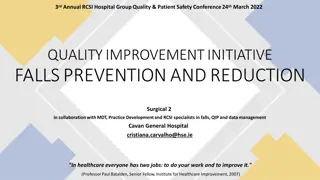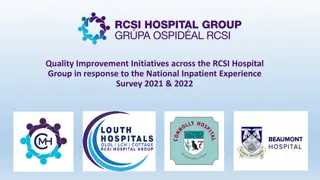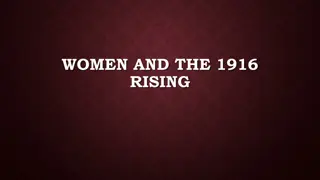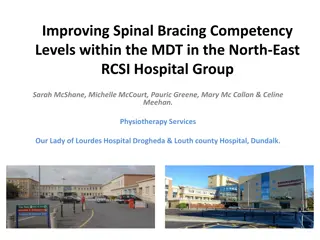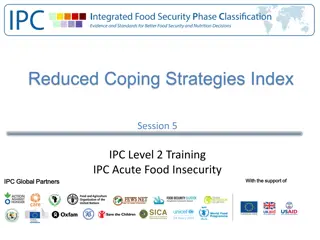
Understanding the Reduced Coping Strategies Index (rCSI) for Food Security Monitoring
Learn about the Reduced Coping Strategies Index (rCSI) developed by WFP and CARE to assess food coping strategies used by households facing food insecurity. Explore how rCSI scores are calculated, its linkages with IPC phases, strengths, and limitations.
Download Presentation

Please find below an Image/Link to download the presentation.
The content on the website is provided AS IS for your information and personal use only. It may not be sold, licensed, or shared on other websites without obtaining consent from the author. If you encounter any issues during the download, it is possible that the publisher has removed the file from their server.
You are allowed to download the files provided on this website for personal or commercial use, subject to the condition that they are used lawfully. All files are the property of their respective owners.
The content on the website is provided AS IS for your information and personal use only. It may not be sold, licensed, or shared on other websites without obtaining consent from the author.
E N D
Presentation Transcript
Reduced Coping Strategies Index rCSI was developed by WFP and CARE Commonly collected food consumption indicator Focus is on food coping: what food coping strategies households employ when faced with lack of food or money to buy food
rCSI - construct Five questions on frequency of food coping behaviours used over the past 7 days. In the past 7 days, if there have been times when you did not have enough food or money to buy food, how often has your household had to: Raw score (number of days) Universal Severity Weight a. Rely on less preferred and less expensive foods? 1 b. Borrow food, or rely on help from a friend or relative? 2 c. Limit portion size at mealtimes? 1 d. Restrict consumption by adults in order for small children to eat? 3 e. Reduce number of meals in a day? 1 3
rCSI - construct Each household is given an rCSI score by multiplying the frequency of the relevant coping strategies with the severity weight, and summing up the results: rCSI = lesspreferred + (borrow * 2) + limit + (restrict * 3) + reduce Often used for monitoring purposes: frequently collected average rCSI for an area provides information on food security trends 4
Linkages between rCSI and IPC Phases Tentative cut-off for Phase 4(-5): may be especially useful in situations where a lot of households have values of 19 and above 5
rCSI - strengths Often available, widely used Easy and quick to collect Good monitoring tool, enables quick detection of changes in household food security Works best in the early stages of crisis situations
rCSI - limitations rCSI is of limited value in severe and protracted crisis situations, where households ability to cope by employing strategies has already been eroded. In order to get comparable results, rCSI should be collected periodically Occasionally quality of data is compromised if enumerators interpret no or zero answer to the first question as no or zero answer to all questions
rCSI - quiz Statement T F 1. rCSI is constructed by considering food consumption related coping strategies For the IPC, the rCSI is a proxy indicator of quantity of food consumed. X 2. X 3. Severity weights are calculated in-country based on local factors. X 4. rCSI can be derived from information collected in LCS modules X 5. rCSI is more useful in early onset crisis than in protracted emergencies X 6. In the rCSI, coping behaviours considered in the module and related severity levels are similar independently of the context considered. X



